Musings
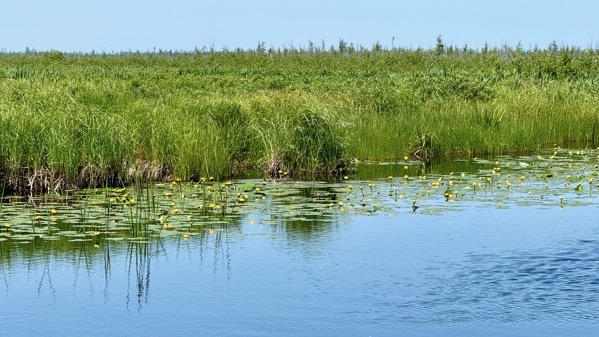
We took a wee side trip to stare into Tahquamenon River, way in the upper reaches…I estimate only some 15% of the catchment is upstream of this spot—for whatever it’s worth. 😉
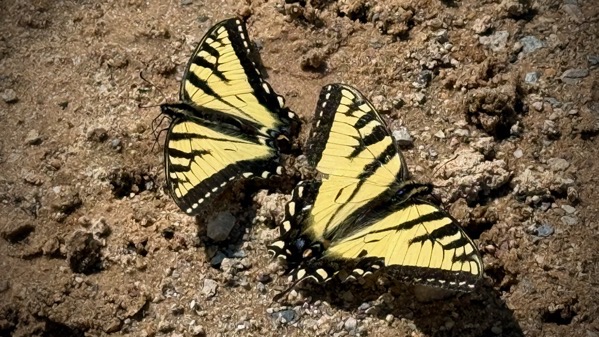
We found four of these spell-binding swallowtails (if you can tolerate butterflies) flitting about on the boat launch apron next to the bridge.
The Guru calls it Take-Home-A-Sac (sarcastic harhar).
Posted at 10:02 PM |
No Comments »
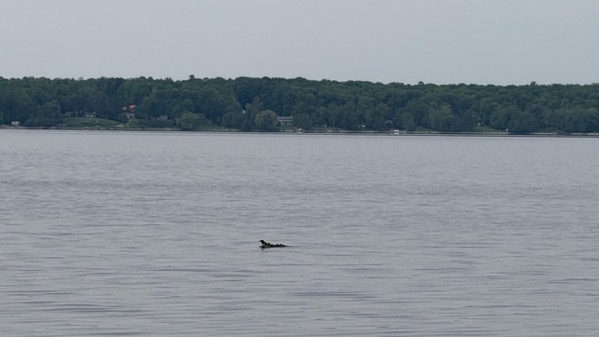
During my morning beach stroll, I spotted these offspring freeloading on mom’s back as she cruised away from a potential threat—meeeee.
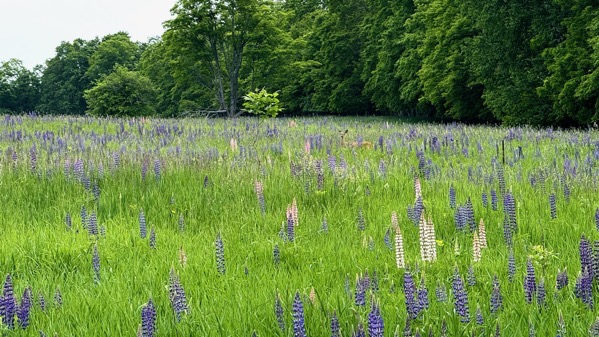
Then, up in the field, I spotted ears above the lupin (just right of center in this shot), which resolved into a doe watching me. She never moved beyond keeping her focus on me as I walked here and there, then departed. I figured she didn’t move because she was by her fawn. [Just a few minutes ago, we saw a doe-(very young) fawn combo in the orchard, which could have been this postulated pair.]
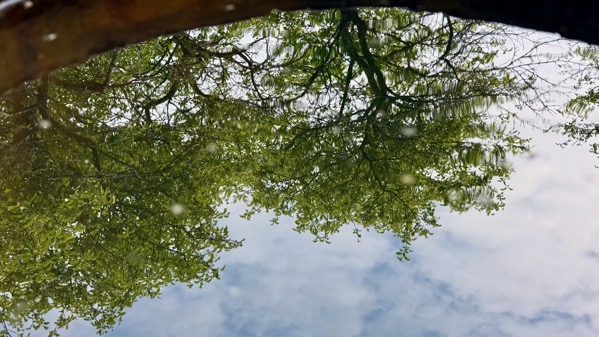
Tired of mom-stories? Here’s one of my oft-repeated water barrel reflection shots…illustrating our overcast, yet pleasant day..
Posted at 9:07 PM |
No Comments »
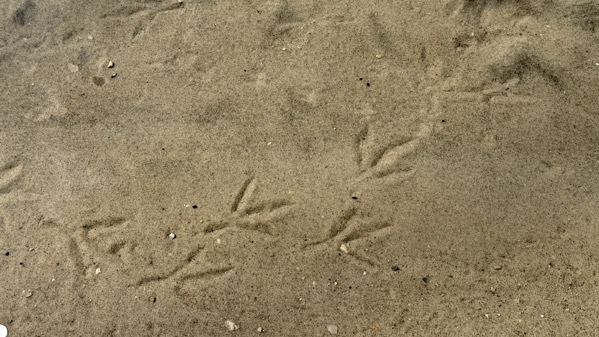
These tracks were in the water this morning the whole length of “our beach.” Big, so perhaps a great blue?
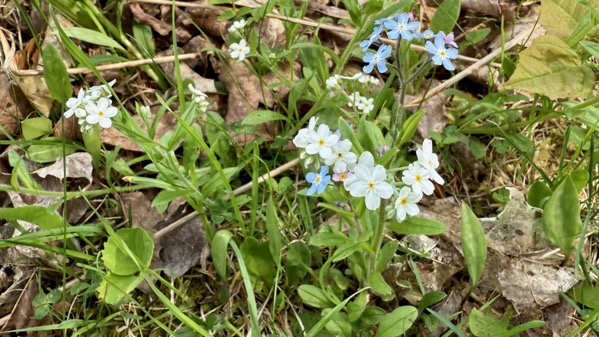
Also, it’s forget-me-not season. I’ve been unable to take a shot that’s in focus until this one—which is close.
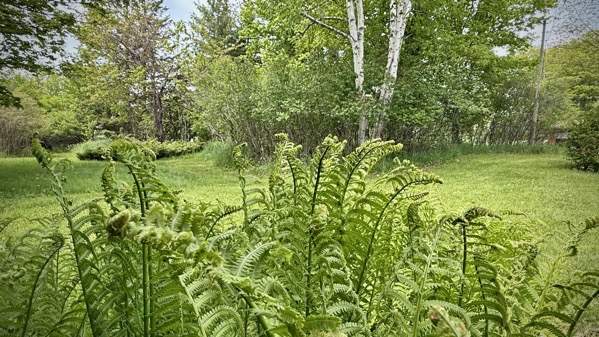
Here’re the ferns by the door, but the view from the cottage into the yard.
Posted at 10:05 PM |
Comments Off on Unthemed

We headed to Manistique to have a better grocery selection than are offered at nearer stores, and began our adventure with lunch, followed by a stroll on the boardwalk (mostly paved) along the Lake Michigan shore to look at the lighthouse. It’s rather stubby and unprepossessing; good thing it’s painted red.
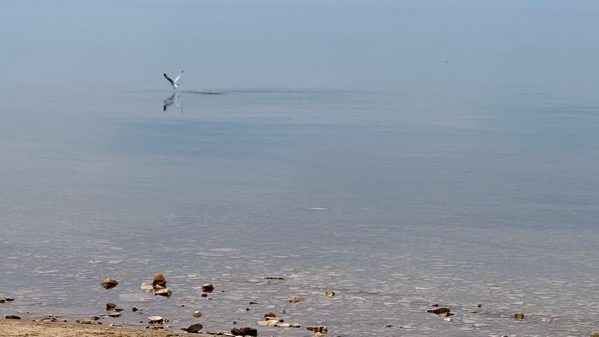
And just to the left, moments after the photo above, I caught a gull taking flight. Look! No horizon in the background, and this was merely perhaps an angle of 40° different.
Next stop: groceries. I guess a version of the shopping-after-lunch plan was in the air, as we saw both parties that were eating when we arrived at the lunch place at the grocery place. Great minds? (Snort; I don’t think so, just restocking after a long holiday weekend.)

Back at the ranch, I got the grocs put up, then headed out to check on the lake and just wander about. The barberries next to the cottage are in bloom. Indeed, we watched a (smallish, dark) hummingbird busy with the flowers just yesterday.
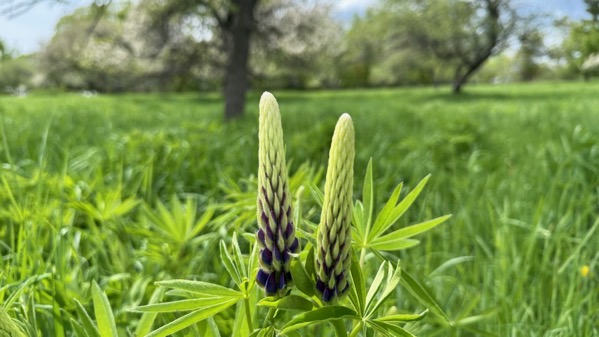
I checked the lupin pair pictured yesterday, and the development is noticeable. This is about 30 hrs after the previous photo.
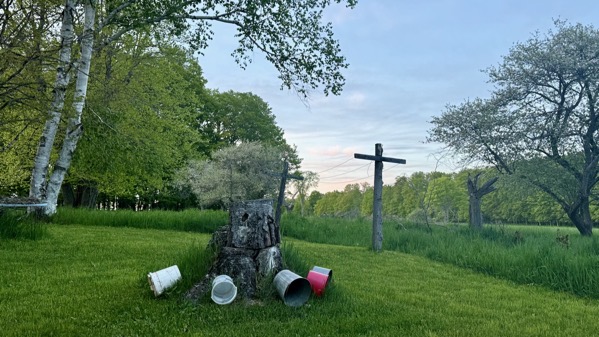
I just went out to close up the entry porch, and realized the buckets I put out to drain and dry now seem to be a convention. I used the buckets to water in the new top-dressing I added to the rhubarb in the bed I created last fall down at the stone house. The plants’re small, yet doing well, and all survived (a major coup).
Posted at 9:47 PM |
Comments Off on Slow kind of busy
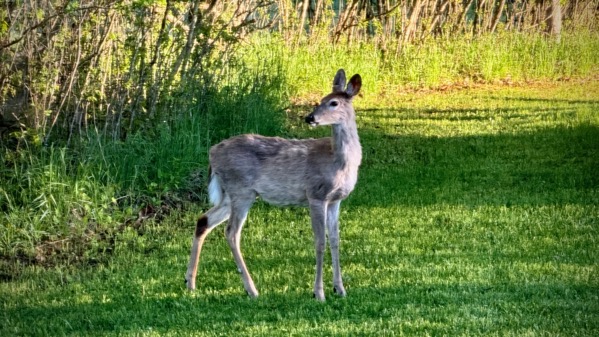
I postulate that this is one of last year’s spotty fawns. It hangs with about five others, and they all have this tawny color at present. I think it hasn’t lost all its winter fur. I got to enjoy watching this visitor’s slow progress around the cottage as I sipped my first cuppa coffee (photo through screen, cancha tell?).
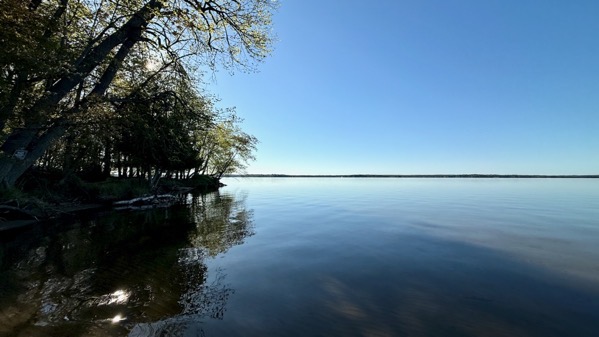
The lake was so still this morning; this was 8:20am.
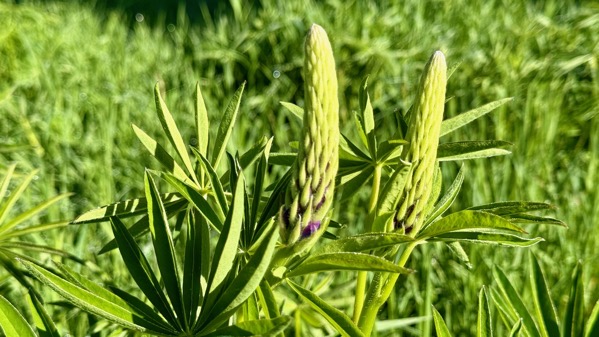
Mid-afternoon, I found this lupin with just the barest bit of purple showing. Also, around the orchard are many more buds than I saw three days ago.
Posted at 9:51 PM |
Comments Off on Color commentary
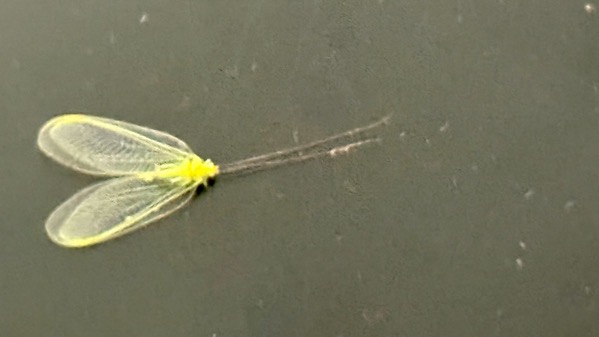
This critter got trapped inside our house. I’m thinking it’s some kinda green lacewing. And, yeah, this shot’s outta focus.
Posted at 8:49 PM |
Comments Off on Little big
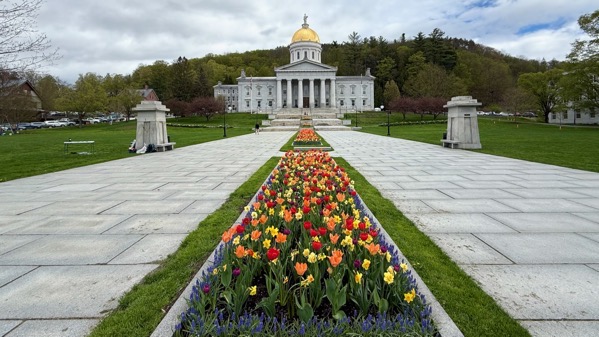
How do you make your state capitol building, here a state house, look more impressive when it has only two stories: put it part way up a hill with a cascade of steps below the main entrance.
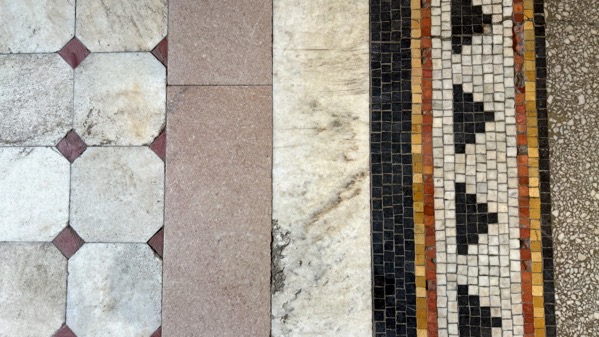
Complex tiling patterns in the entry of the public library, Randolph.
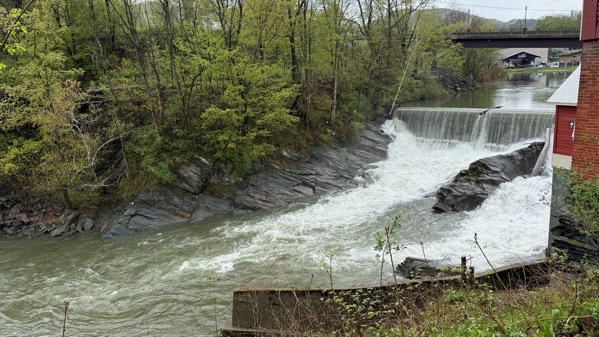
Dam and falls in Bethel; mill buildings are to the right.
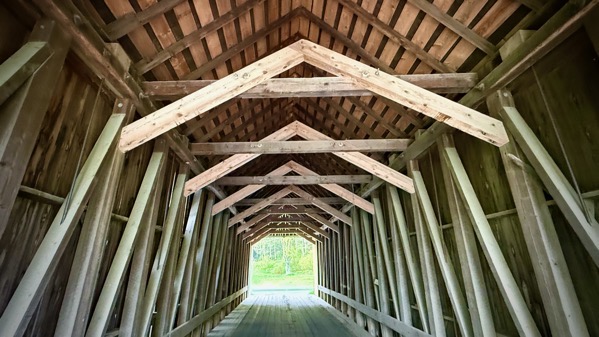
Exposed interior structure, Howe Covered Bridge.
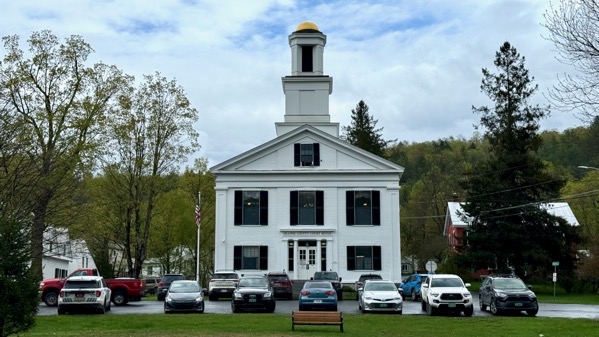
Orange County Court House, Chelsea.
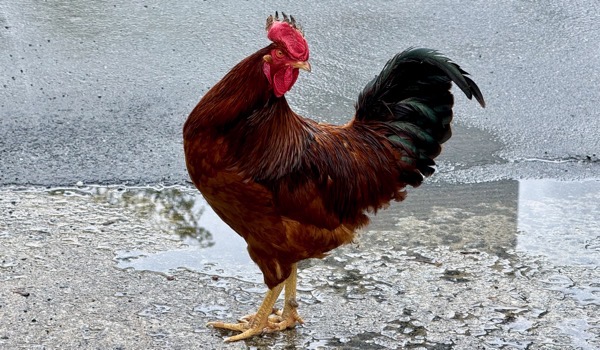
Oddly, Chelsea has two commons separated by a rushing creek. I spotted this chicken on the bridge connecting the two commons, which of course provoked the question: why did the chicken cross the road? Data based on this chicken is null as it did not cross while I was watching.
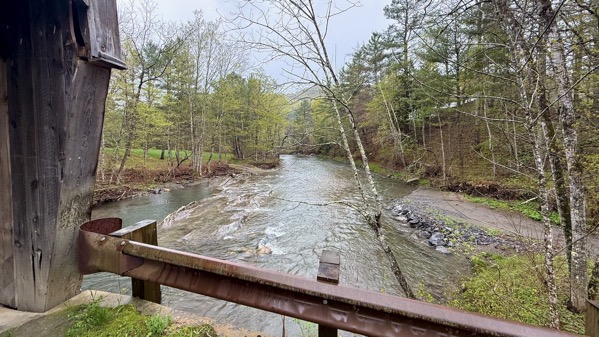
We visited several covered bridges along this section of the White River, and this one, Moxley, had an actively used ford just below the bridge, while none of the others did. I figure it’s used by farmers and so on with large equipment.
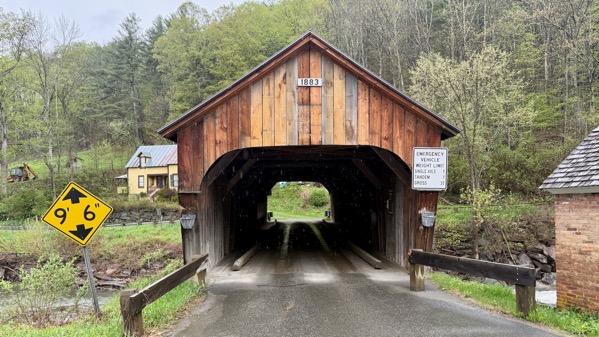
Cilley Covered Bridge: although the bridge dates to 1883, these boards are from perhaps the last few months.
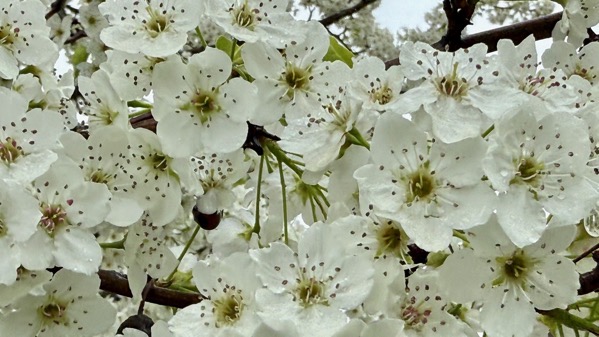
I’ll spare you any more covered bridge photos; how ’bout some ornamental, um, apples? Guessing…that’s way too dense a flowering pattern not to be an ornamental variety, and I think it’s apple, but I’m no botanist.
Posted at 10:05 PM |
Comments Off on VT architecture miscellany and other miscellany
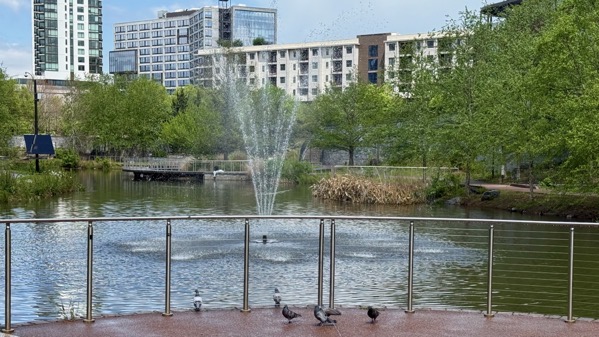
We strolled around the lake at Old Fourth Ward Park…
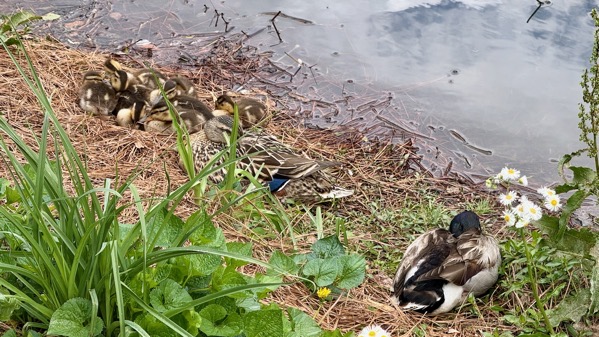
…and encountered a napping mallard family…
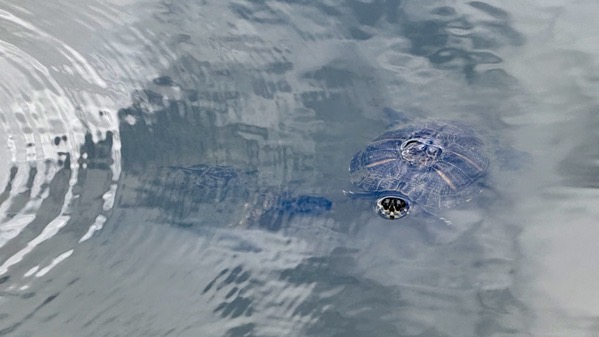
…and a pair of large-ish turtles…that may be a family, also…we couldn’t tell.
Posted at 7:49 PM |
Comments Off on Nature narratives
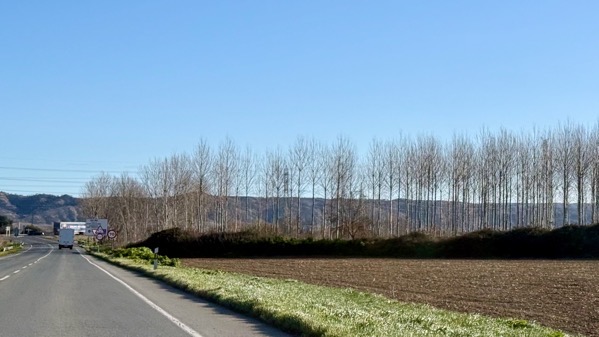
This is maybe the third time we’ve seen a stand of these silver-barked trees. Dunno what they are…mystery arboles.
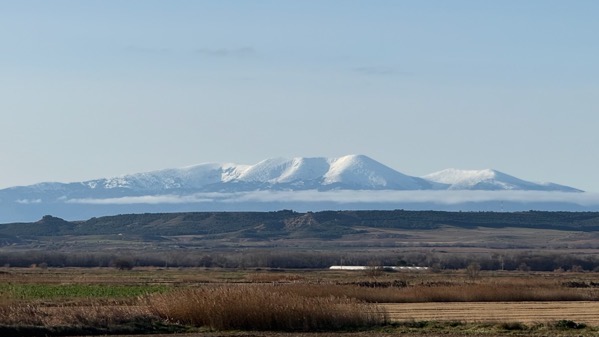
I’ve confirmed that this is Moncayo.
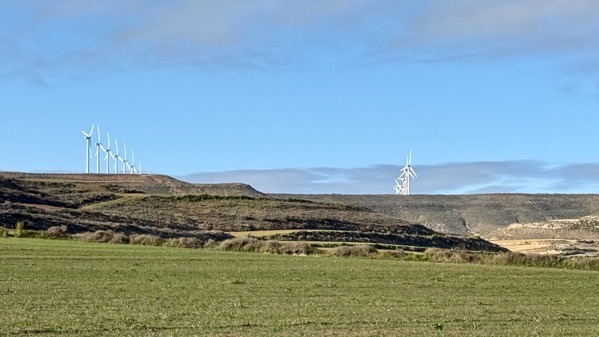
Wind turbine alignments. I’m trying to get my photographic fascination with them out of my system. Round hay bales can grab your eye this way, too.
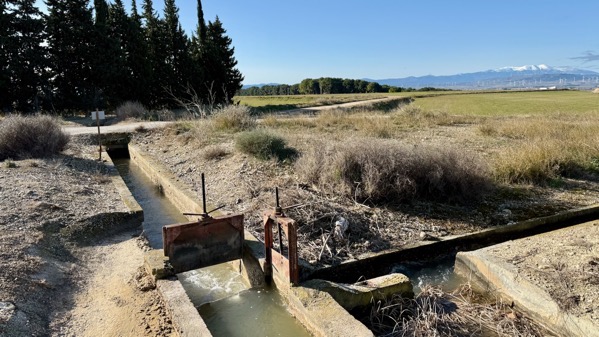
We’ve seen plenty of large and small irrigation ditches, but rarely the valves. Here’s a split, where the flow is being directed two ways.
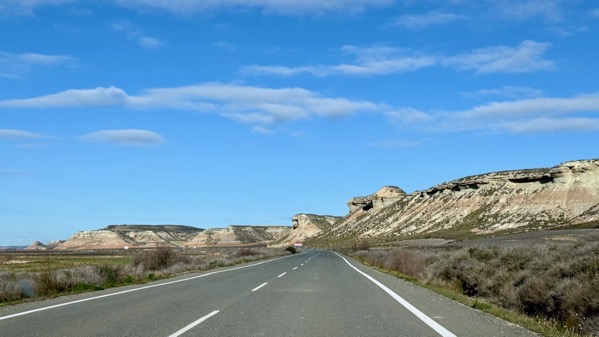
One of our goals today was to get a look at a large eroded area, or badlands, that is a park called Bardenas Reales.
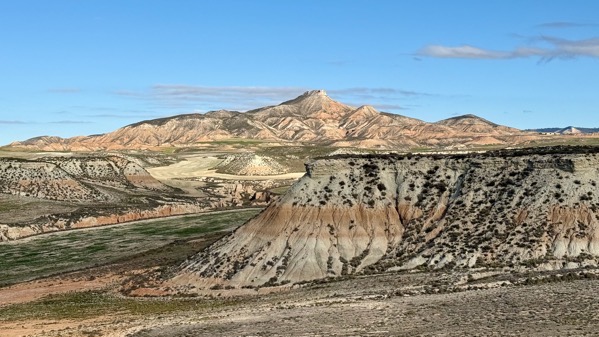
We did find one place with a road we could safely try to get into (or towards) the heart of this sculpted landscape. You can see we didn’t get far, as farmed fields remain.
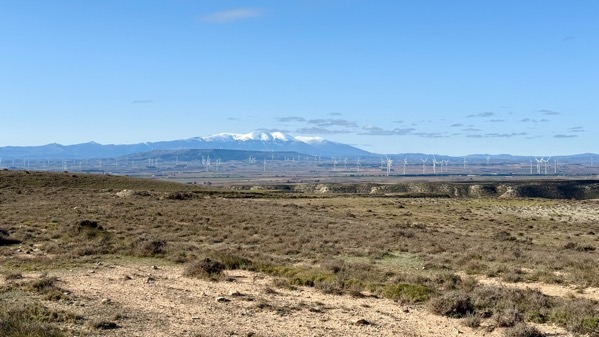
We partly circled Moncayo yesterday, and completed the loop today.
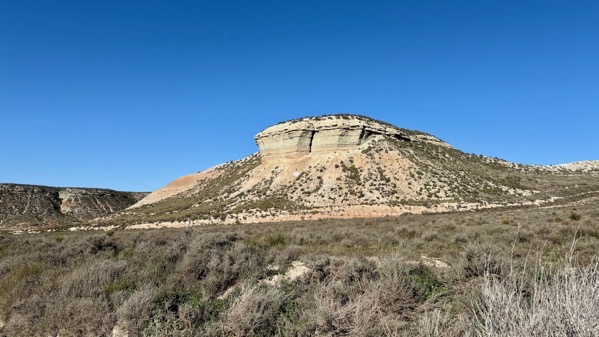
One more eroded landform.
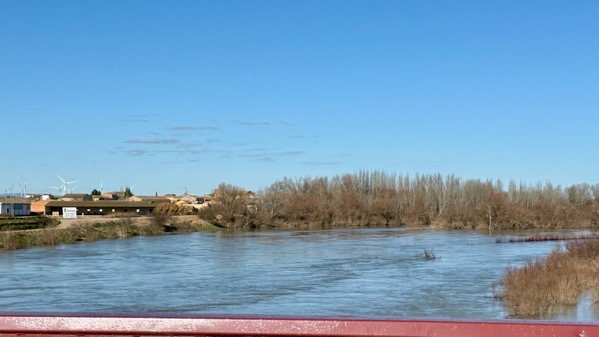
I finally got a shot of the Ebro when we crossed it. I think this is normal spring elevated levels.
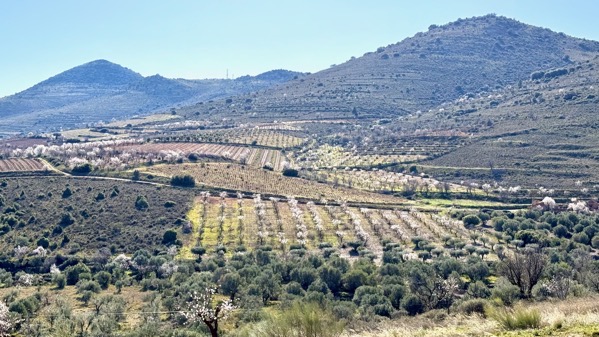
We cut through a “corner” of the lower slopes of the Moncayo massif, and found what must be a relatively warmer area, as many orchards flaunted blooming trees. My guess was peaches or apples, but I couldn’t parse the tree shapes and figure out the species.
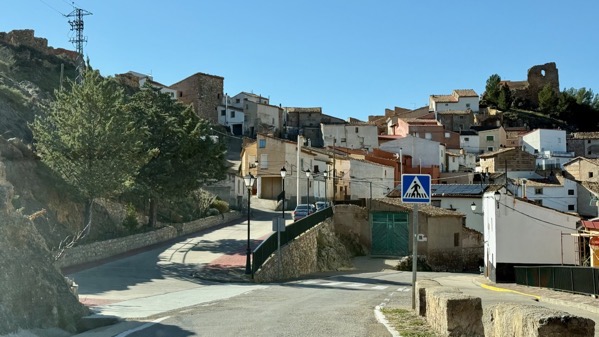
We went through/by many little towns. Amazingly, most had parked cars and evidence of active residents. I cannot figure out the economic support for these scattered villages.
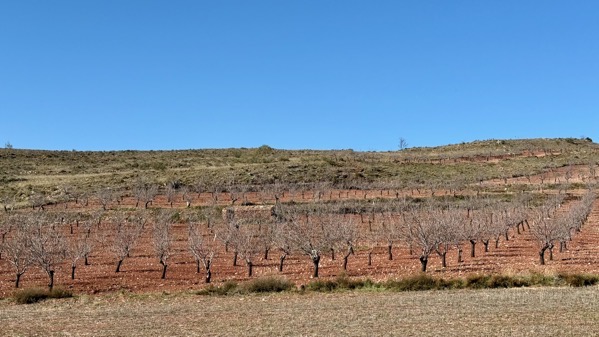
Later in the day, I became fascinated with the variations in soil color…this is rather brick red, and the trees are not yet blooming (February, remember…snow on elevations, remember?).
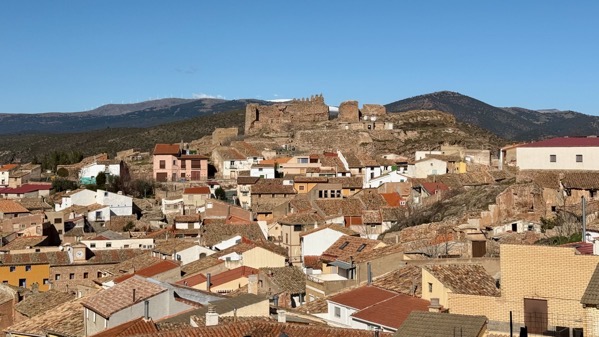
Castle ruins above larger small town…note the white lenses in the far distance behind the jagged walls…Moncayo massif, again.
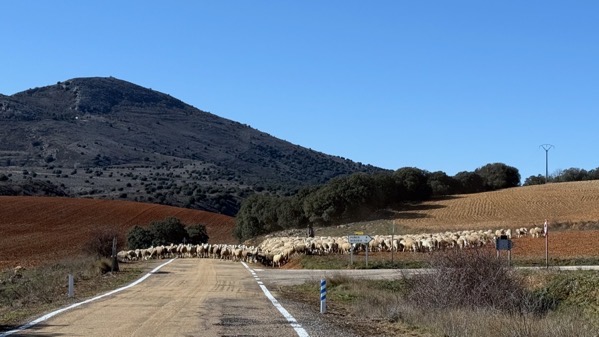
I counted one man and one dog with this substantial sheep herd. As we continued up the road, it was evident that they’d come down it for at least a mile. Transhumance underway? Earlier in the day, we saw a smaller herd, controlled by a man with a loaded mule and four dogs. Spring is springing for shepherds.

This is the second fox we’ve spotted. Neither was much concerned with our presence.
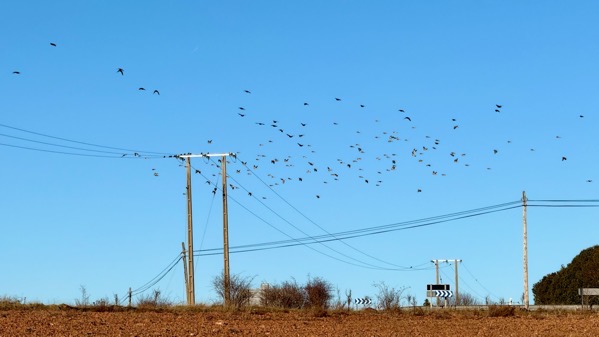
I just encountered a description of wheeling clouds of birds as resembling the billowing robes of a genie. As shown….
Posted at 3:30 PM |
Comments Off on Circumnavigation, etc.

Wind turbines on horizon. Strange color balance (through windshield).

Frost patterns…one shady place we saw frost as late as 11:30am.

Flags, bell tower.

Storks, backlit.

Horses, also backlit, with frost, tracks.

Medieval rock graves, Revenga.

Medieval rock graves, Regumiel. They antedate the 12th C church built partially atop them.

Medieval rock graves with ice skim, Duruelo. Some sources say this trend in this area, the Upper Arlanza Basin, say these graves are 7th/8th C. Others say 8th–10th C.

Stand-alone snow-capped mountain, perhaps Moncayo.

Wind turbine array, with Pyrennees in far distance and Ebro basin between.

Rioja territory grapevines.

This is the part of the Roman city of Graccurris, founded 179 BC, that has been “reconstructed.” I could make little architectural sense of what seemed to me to be mostly a wasteland. Of course, there was significant Medieval occupation here, too….

Largest church in Alfaro, essentially modern Graccurris.

Smaller Alfaro church.

Fuzzy moon out our hotel window, a few minutes ago.
Posted at 1:57 PM |
2 Comments »



























































